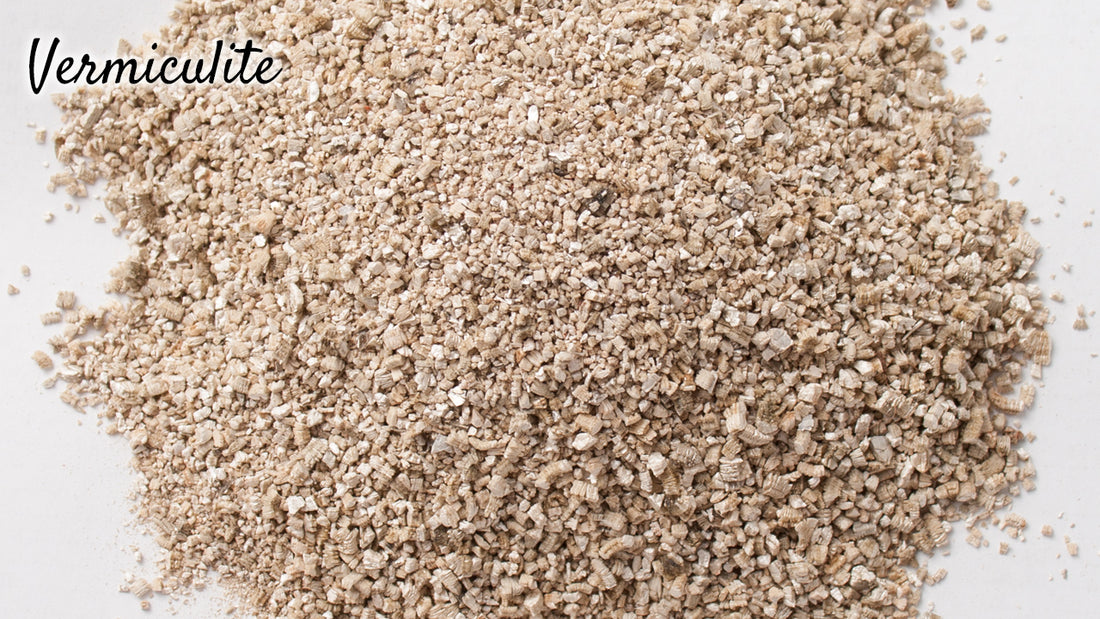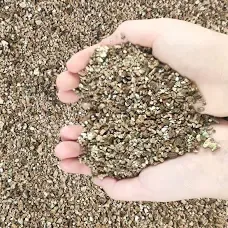Jul . 04, 2024 10:12 Back to list
How to Use Soil Amendments - Vermiculite
How to Use Soil Amendments - Vermiculite

What is Vermiculite?
Have you ever noticed how some potting mixes sparkle in the sun? That’s because they contain vermiculite, a soil amendment that helps with water retention, aeration and nutrient exchange. Vermiculite is a phyllosilicate mineral that is mined from rocks formed 1.5 to 3 billion years ago. Crude untreated vermiculite is used in a variety of industrial materials. The garden variety of vermiculite is called “exfoliated” vermiculite, which has been treated with extreme heat and pressure to force it to expand. This process creates a porous surface that is great for retaining moisture and nutrients. In the past, some vermiculites contained asbestos. However, those contaminated mines were shut down and modern vermiculite is rigorously tested to make sure it is free of this carcinogen.
Vermiculite is a non-toxic mineral that will not deteriorate in your soil mix, so its effects last for a long time. Since it does not break down, it is not useful as a source of nutrients. Instead, it is a structural helper to promote improved soil. Its unique shape traps water and nutrients, which can be extracted by plant roots as needed. This means you need to water less often in high temperatures than you would with soil that does not contain vermiculite. This growing medium can help retain water and nutrients. Mixing vermiculite into your growing medium can help promote optimal root growth.
What is the Benefit of Adding Vermiculite to the Soil
- Improves moisture retention when mixed with soil.
- Helps with aeration of root systems, although if this is your primary goal in using a soil additive, you should instead choose perlite.
- Because it is a sterile medium, it is great for starting seeds and for propagating cuttings. Using plenty of vermiculite, or even straight vermiculite, can prevent bacterial and fungal problems such as damping off and root rot. It is commonly used for seed germination and in seed germination mixes.
- Improves drainage and lightens the soil in the garden, in raised beds, or in pots.
Using Vermiculite in the Garden and Landscape
- Use 1/3 to 1/2 vermiculite in your potting soil for containers or when building your raised beds, or improve your garden soil by adding it in the spring with your other soil amendments and compost.
- For new lawns, spread a 1/4 inch layer evenly around the planted area just after you seed it, then irrigate well. The vermiculite will help hold moisture near the seeds to improve germination.
- Vermiculite can also be used for storing bulbs and root crops over winter. It will retain water from the environment around the roots and bulbs, without desiccating the roots and bulbs themselves. Just layer the vermiculite and the roots or bulbs, and store in a cool, dry place away from sunlight.
- Your worm bin can also benefit from the addition of vermiculite. Just add a handful to provide the grit your worms need to digest their food.
Understanding Vermiculite
Vermiculite, a mineral mined from ancient rocks and treated to form the exfoliated variant, serves as a crucial soil enhancer in gardening. This porous material aids in water retention, aeration, and nutrient exchange, making it a sought-after component in soil amendments.
Insight into Vermiculite
Derived from phyllosilicate minerals, vermiculite undergoes a process involving extreme heat and pressure, resulting in its expanded, porous structure. It's rigorously tested for safety, ensuring it's free from asbestos, making it a safe and lasting addition to garden soils.
Vermiculite
Practical Use of Vermiculite in Gardening
Utilizing vermiculite for optimal gardening results:
- Mixing it into containers, raised beds, or garden soil during spring with other amendments and compost.
- Spreading a 1/4 inch layer for moisture retention when seeding new lawns.
- Storing bulbs and root crops over winter, maintaining moisture without desiccating the stored items.
- Adding to worm bins to aid digestion with the necessary grit for worms.
Sizes of Vermiculite
Vermiculite is available in several different particle sizes, typically categorized by grades. The most common grades of vermiculite are:
-
Super Fine Grade: Particles are very small, typically less than 1 millimeter in diameter. This grade is often used for seed starting and as a soil amendment in potting mixes.
-
Fine Grade: Particles are slightly larger, generally ranging from 1 to 2 millimeters in diameter. It is also used in potting mixes and for horticultural purposes.
-
Medium Grade: Particles range from 2 to 4 millimeters in diameter. This grade is commonly used in gardening, hydroponics, and as a soil conditioner.
-
Coarse Grade: Particles are larger, usually between 4 to 6 millimeters in diameter. It is often used for soil aeration and drainage improvement in gardening and agricultural applications.
-
Extra Coarse Grade: Particles are the largest, typically over 6 millimeters in diameter. This grade is used in situations where maximum aeration and drainage are required, such as in cacti and succulent mixes.
Thoughts on Vermiculite
In gardening practices, vermiculite stands as an invaluable aid in soil enhancement, offering improved moisture retention, aeration, and fostering healthy plant growth. While alternatives exist, vermiculite's unique properties make it a valuable addition to potting mixes and garden soils, contributing to flourishing plant life and sustainable gardening practices.
This information is one part of a series focused on how to amend soil. Please see our resource center where we offer additional instructional videos and articles, as well as our bookstore.
You can find more information on soil drainage here in our resource center.
-
Eco-Friendly Granule Covering Agent | Dust & Caking Control
NewsAug.06,2025
-
Fe-C Composite Pellets for BOF: High-Efficiency & Cost-Saving
NewsAug.05,2025
-
Premium Tundish Covering Agents Exporters | High Purity
NewsAug.04,2025
-
Fe-C Composite Pellets for BOF | Efficient & Economical
NewsAug.03,2025
-
Top Tundish Covering Agent Exporters | Premium Quality Solutions
NewsAug.02,2025
-
First Bauxite Exporters | AI-Optimized Supply
NewsAug.01,2025

